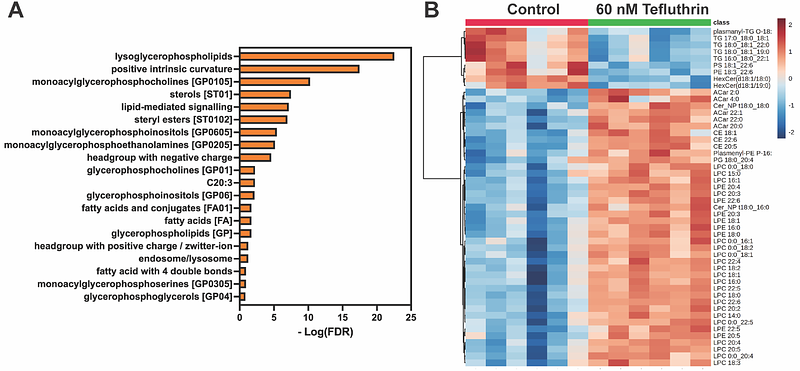Exposure to the pesticide tefluthrin causes developmental neurotoxicity in zebrafish

Exposure to the pesticide tefluthrin causes developmental neurotoxicity in zebrafish
Mesmar, F.; Muhsen, M.; Farooq, I.; Maxey, G.; Tourigny, J. P.; Tennessen, J. M.; Bondesson, M.
AbstractBACKGROUND: The insecticide tefluthrin is widely used in agriculture, resulting in widespread pollution. Tefluthrin is a type I pyrethroid characterized by its high persistence in the environment. Understanding the mechanisms of toxicity of tefluthrin will improve its risk assessment. OBJECTIVES: We aimed to decipher the molecular modes of action of tefluthrin. METHODS: Phenotypic developmental toxicity was assessed by exposing zebrafish embryos and larvae to increasing concentrations of tefluthrin. Tg(mnx:mGFP) line was used to assess neurotoxicity. Multi-omics approaches including transcriptomics and lipidomics were applied to analyze RNA and lipid contents, respectively. Finally, an in-silico ligand-protein docking computational method was used to study a possible interaction between tefluthrin and a protein target. RESULTS: Tefluthrin exposure caused severe morphological malformations in zebrafish larvae, including motor neuron abnormalities. The differentially expressed genes were associated with neurotoxicity and metabolic disruption. Lipidomics analysis revealed a disruption in fatty acid, phospholipid, and lysophospholipid recycling. Protein docking modeling suggested that the LPCAT3 enzyme, which recycles lysophospholipids in the Lands cycle, directly interacts with tefluthrin. CONCLUSIONS: Tefluthrin exposure causes morphological and neuronal malformations in zebrafish larvae at nanomolar concentrations. Multi-omics results revealed a potential molecular initiating event i.e., inhibition of LPCAT3, and key events i.e., an altered lysophospholipid to phospholipid ratio, leading to the adverse outcomes of neurotoxicity and metabolic disruption.


